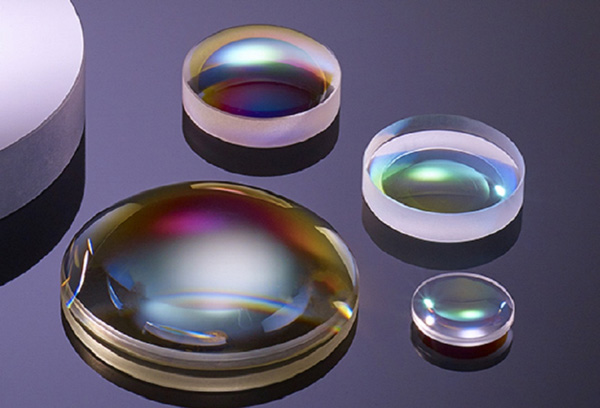Best Choice of Spherical Lens
According to the refraction of light and Snell's law, light will be refracted at the interface between the optical material and the air, resulting in a change in the direction of light propagation. Parallel rays of light converge to a point after passing through a double-convex lens and plano-convex lens. They diverge after passing through a double-concave lens and plano-concave lens. After the optical design, optical lenses converge and scatter the light, which plays the role of collimation, relay and imaging. Due to the different shapes of optical lenses, the light transmission effect, imaging effect and spherical aberration are also different.

Plano-convex lenses are suitable for the following situations:
1. Spherical lenses are used for infinity conjugate.
2. Object and image are located at different distances from spherical lenses.
3. The object is at infinity and the image is in focus.
4. Converging parallel light.
5. Turn the light of the point light source into a parallel light.
When the convex surface of a plano-convex lens is located at the maximum object distance, its asymmetry minimizes spherical aberration.
Biconvex lenses are suitable for the following situations:
1. Spherical lenses are used for finite far conjugate.
Suggested reading:Demystifying Types and Applications of Resistors
The Importance of Fully-Functional Traffic Lights - HDFC Ergo
What is the difference between RF cable and coaxial cable?
Phone Chargers: Powering Your Devices Anytime
Understanding Deep Cycle Battery Packs
Choosing the Right Wire Wound Resistor for Your Electronic Projects
Eye Bolts: The Reliable Workhorses of Various Industries
2. The object distance is equal to the image distance.
3. Converging the light of a point source.
4. Forming or transferring an image in an optical system.
5. Doublet lenses.
Lenticular lenses have equal convex radius. Both surfaces of double convex lenses are symmetrical in both the horizontal and vertical directions. Therefore, lenticular lenses have less spherical aberration in the above case.
Plano-concave lenses are suitable for the following situations:
1. Extend the focal length of optical systems.
2. Offset the aberration of optical systems.
3. Achromatic lenses.
In the optical systems, the concave surface of a plano-concave lens is generally toward the infinite conjugate. But when the plano-concave lens is in a high-energy laser, in order to avoid virtual focus, the plane of the plano-concave lens is oriented towards the infinite conjugate.
More about our Custom Optics, please contact us
Suggested reading:Advantages of Vertiv Liebert UPS Rectifier Cabinets
The Advantages of Stamp Hole Core Board SOMs
The Advantages of Lithium-ion Golf Cart Batteries
Understanding Heavy Duty Vehicle Batteries
String Inverter: Harnessing Solar Power Efficiently
Tips for Maximizing the Lifespan of Your Power Battery
What is the Difference Between SWA and Armoured Cable?








